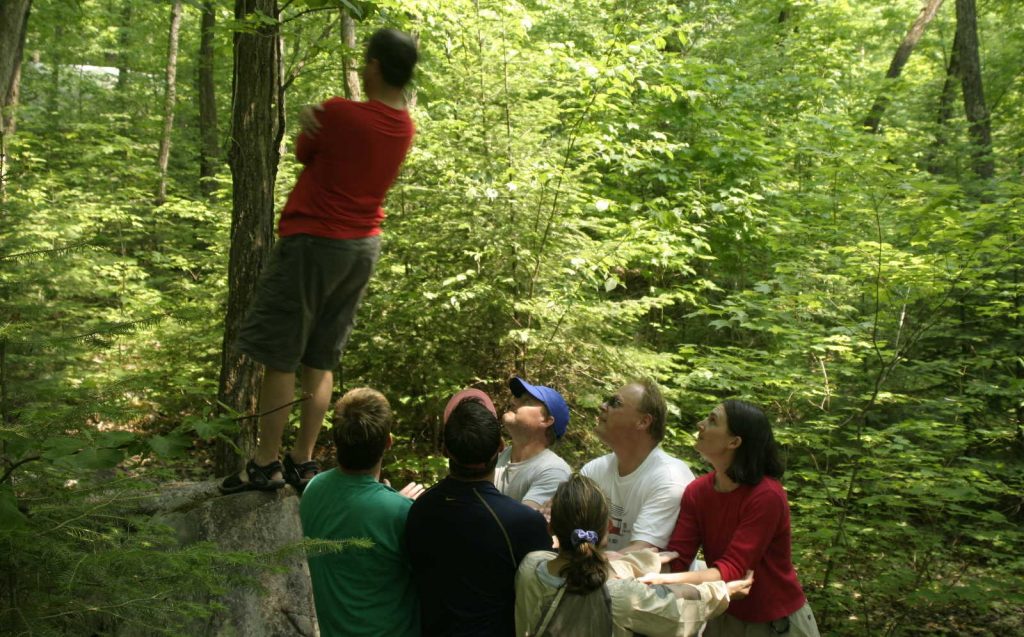Many businesses now require that their employees be “unplugged” – from laptops, BlackBerrys, iPhones and other devices – during face-to-face meetings. The trend is in response to too many workers being distracted by technology when they’re supposed to be connecting with each other.
Being “always on” can be a real turnoff to really listening to people sitting right in front of you. Aside from just being rude, continuous partial attention generally leads to partial results. Unfortunately, even offsite corporate retreats and events can be unproductive with a constantly plugged-in team, making more eye contact with their screens than other team members.
Disconnect to Connect: Frustrated by workers so plugged in that they tune out in the middle of business? Consider going “topless,” as in no laptops allowed. Ban the use of BlackBerrys, iPhones and other devices from the conference room. Remove chairs and have stand up meetings. Focus on one thing at a time – like the person who is doing the talking.
Consider incorporating the following activities, designed for human resources and other management staff looking to inspire their teams:
Encourage Dreamtime for your Team
Establish a space that is beyond the distractions of the office. This strategy can be extremely valuable in increasing productivity in a stress-filled work environment.
Setup a Quiet Room: Give the room a name and promote it with all departments. Locate appropriate musical selections. Choose music that is instumental (chimes, harp, pan flute), perhaps with nature sounds.
Lower the Light: Create a low light atmosphere with 15 watt table lamps instead of traditional overhead ceiling lighting.
Furnish Minimally: yoga matts, pillows and chairs and a few low tables are the only furniture required. Plants are also good. Invite your team to help build the space.
Establish expectations: The quiet space is not a place for conversation, meetings, eating, sleeping. Encourage quiet thinking, journaling or wellness practice like stretching, yoga or prayer. Consider having staff remove their shoes when entering the quiet space to identify that this space is different from other office spaces.
Create a Treasure Map for Success
Business map-making can be an inspirational tool to chart a course for the future that can be referred to again and again over years.
Preparation: Try to locate banana paper or some other paper that is map worthy. Interesting writing materials are also a must. Invite each attendee on the team can create a map.
Session 1: Ask your team to imagine your business as a ship. What kind of ship would each department build? Where does it get it’s power? Who on the team is at the helm? How do departments interact? Each department or manager can draw the ship in the centre of the map and then share their insights with the management team.
Session 2: What are the highlights of the company? Look to the left side of the map and illustrate the treasure you have reaped, the adventures your team has shared. Appreciate where you have been. Put orienting lines on the map and label them with your company values & principles.
Session 3: Chart a course for the future. Choose a specific time period (ie. 5 years out). Illustrate treasures you hope to locate, islands of success you hope to reach, goals worthy of achieving. Remember to put the threats to your success… and competitor strengths. What are the dragons that can threaten your success? Where are the potential doldrums that will take the wind out of your sails?
Keeping the maps in public view can motivate and inspire each department. Make a plan to revisit the maps over an agreed upon time period (ie. every 2 years).
Get Outdoors
Plan your next team meeting in an outdoor location. Choose a day that is comfortable and plan a short walk to an open outdoor space. Have participants bring along something to sit on. Link the experience to your mapping activity by giving team members a map to the chosen location and encourage people to walk in small groups to the outdoor meeting location. Choose a well shaded location if it’s a sunny day. Conservation areas and parks are good locations.
Plan ahead and stake out your team meeting area ahead of time. Plan for snacks and drinks using reusable containers.
Plan an outdoor team building activity or two that inspires attention to something that matters to your team: good communication, trust, etc. There are some ideas at Teampedia.
After the meeting, find a way to get some feedback from attendees. Is it feasible to hold an outdoor meeting each month? Make a list of underutilized indoor and outdoor locations in your community and plan a meeting at unusual locations from time to time.

Are you looking to plan the ultimate corporate retreat?
Our comprehensive guide walks you through everything from picking the perfect location, planning activities and team games, creating meaningful agendas, and more. With years of experience in hosting executive retreats, delivering team-building and strategic planning retreats – we know what it takes to make your corporate retreat one that will be remembered for years to come.
A copy of our Corporate Retreat Planning Guide is on its way to your inbox.



